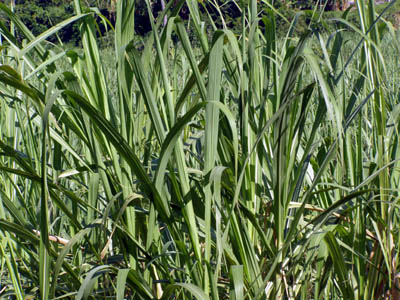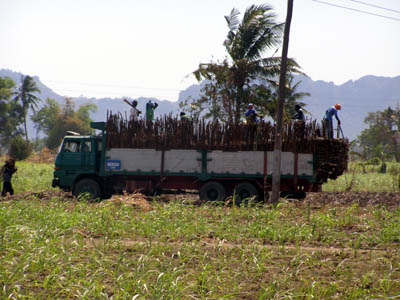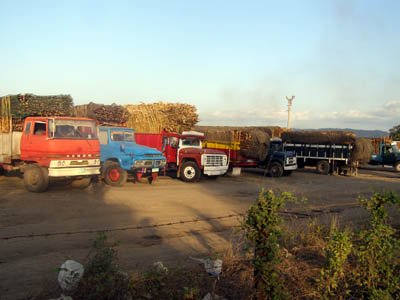|
A Sweet Grass – The Sugarcane
Sugarcane fields are abundant in all towns of Batangas, and sugar is a major industry in the province. This could be the reason why the province is home to a wide variety of sweets.
And Nasugbu is home to Central Azucarera Don Pedro (CADP) one of the biggest cane and sugar refining in the Philippines. Traveling to the beaches in Nasugbu, Lian and Calatagan one cannot miss the landmark, in the main thoroughfares of Nasugbu. The cane plant is a form of grass, which belongs to the Poaceae family. The stem produces a juice with high sugar content, which is then made in to sugar. It is often referred too as the sweet grass. Batangas climate of warm and sunny makes it suitable for growing sugarcane. A well-drained and fertile land with adequate rainfall during the wet season is an ideal condition in planting the crop. The sweet grass is planted using the selected stalk of a mature cane plant. The carefully chosen cane stalks are laid horizontally in a narrow trench in the soil made by a plough. Then, it is covered with soil. Afterwards, roots grow from the base of the new stem of the cane plant. The cane plant can grow as high as four feet, and usually could take 7 to 8 months for it to be available for harvest. The harvest time in Batangas starts on the month of December and ends on the month of May. The cane plant produces more sugar content during the summer months when there is less rainfall. In Batangas, the cane plant is harvested employing the traditional way of harvesting the crop manually. A labor-intensive job known around the province as maggagapak, or paggagapak (sugarcane cutter). Most maggagapak prefer to burn the plant during harvest time for a much easier job. However, according to most sugarcane growers that burning the cane during harvest reduces the sugar content of the plant. After the cane has been cut and loaded to a truck, it is then moved to the sugarcane mill (CADP) for processing. At the mill, the name of the producing farm and the weight of the sugar cane are recorded. This is where the sugar is processed together with its by-product, the molasses.
Actually there are a number of by-products the cane plant produces aside from the molasses. Bagasse the fibrous remains of the sugarcane are used to power the required fuel to run the mill. It can also be used to manufacture paper. In addition, the sweet grass is also used to produce ethanol for fuel. Thru the Department of Energy, ten percent of ethanol is now used to blend with gasoline products here in the Philippines, which is more popularly known as E10. Other use of the sugarcane is by making it into a juice. In the town of Tanauan, at barrio Santol, it has been one of the uprising small-scale industries. The production of sugarcane juice has created jobs for the unemployed in the area. The innovative juice industry could help the small farmers possess an additional income. What is more interesting about the beverage is that it has been found, that drinking sugarcane juice has natural medicinal properties. The juice has been said to be rich in carbohydrate and iron. Researchers have established that the juice when used as a drink is beneficial for persons with fever. The drink keeps your body cool and hydrated during hot weather and prevents the body from getting heat stroke. It also helps make a stronger kidney, eyes, heart, brain and stomach. Others have asserted that sugarcane juice is an effective means to cure sore throat, and even prevent colds and flu. A manggagapak (sugarcane cutter) even claimed that eating sugarcane helps clean and strengthen the teeth. I wonder if your dentist would agree to such claims? Maybe it could be a good question to ask, when you visit your dentist. So if you need a refreshing beverage, why not try sipping some sugarcane juice to quench your thirst and at the same time be a natural healthy individual.
Return from Sugarcane to About Batangas
|








